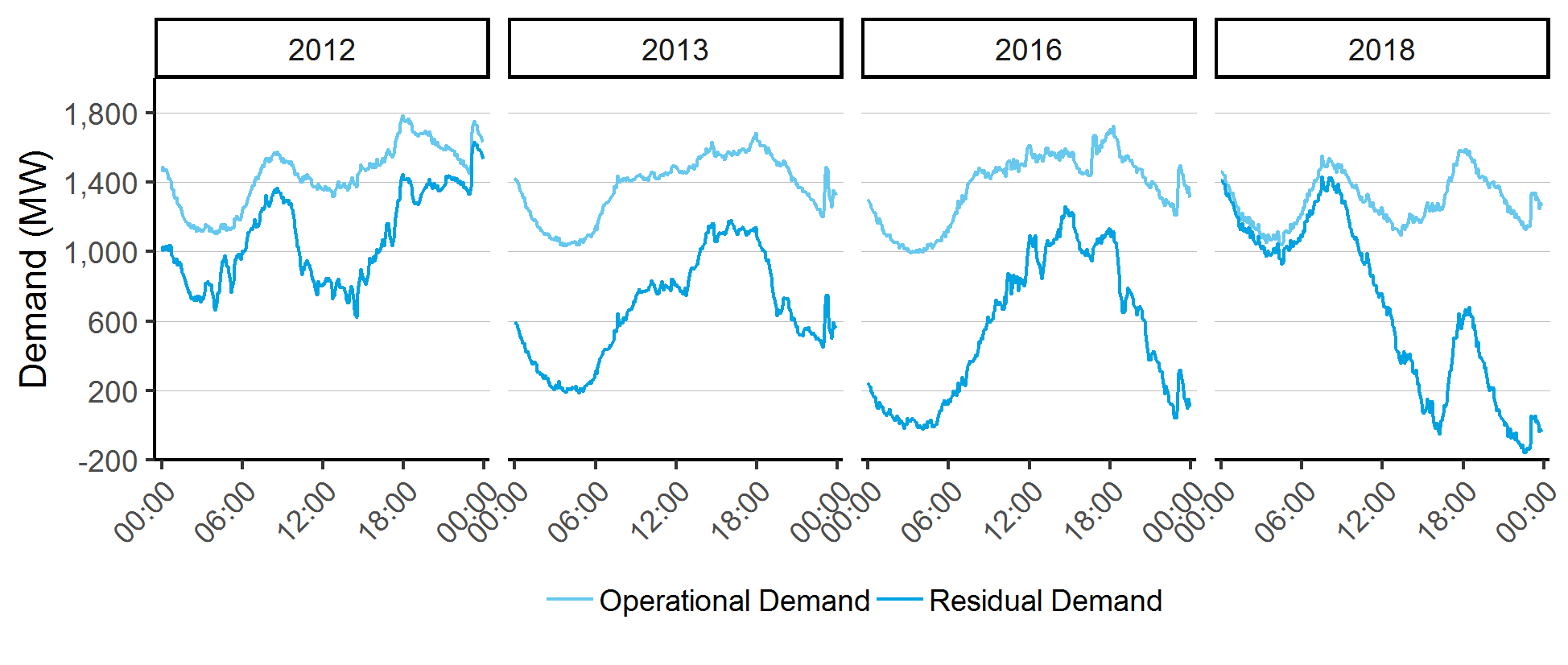Demand response in the NEM of the future
By Dr Alan Rai
The technological revolution in the energy sector is allowing the Australian Energy Market Commission to unlock demand response in the national electricity market (NEM).
Last month, the AEMC published its second draft determination and rule to implement a wholesale demand response mechanism (DRM) for large customers in the NEM. The draft rule is an important reform as it introduces a new low-cost mechanism for allowing non-retailers to sell a demand reduction into the grid.
The draft rule is focussed on demand reduction at times of peak demand. This can help put downward pressure on energy and grid costs and also emissions as it could reduce the need for peaking generation.
The DRM would allow large customers to benefit from the technology we now have by participating in the central dispatch of electricity - something that was rare before. It will also help us get ready for a future where technology has evolved to the point where energy is dispatched in a truly two-sided market.
The broad concept of demand response has a role to play in contributing to resolving Australia’s energy trilemma of prices, security and emissions.
In this broader context, demand response is also about how to make demand more flexible.
The need for demand flexibility
Why do we need demand to be more flexible? In short, this would enable a power system with an increasing penetration of variable renewable energy (VRE), like wind and solar rooftop PV panels, to maintain reliability and security at lowest possible cost. As noted in a recent journal article with AEMC colleagues, increased VRE penetration across the NEM, especially in South Australia, has fundamentally changed the nature of electricity demand. Intra- and inter-day demand today is much more variable and volatile than historically. It is projected to become more variable and volatile given projected future VRE penetration rates. Figure 1 illustrates this for South Australian demand on 9 May of various years - this date chosen to represent an innocuous time of year for the power system in South Australia.
Figure 1: Profile of daily operational and residual demand in South Australia, 9 May by year
Note: Residual demand is operational demand less utility-scale VRE output. Residual demand is supplied by utility-scale dispatchable generation.
Source: The times they are a changin’: Current and future trends in electricity demand and supply, The Electricity Journal, Vol. 32(6), pp. 24-32
This more variable demand is currently met by generation. However, dispatchable capacity can be provided by both supply-side and demand-side resources. As noted in another recent journal article, being “dispatchable” has become more valuable. Hence the need to consider ways to unlock potential demand flexibility.
From before the start of the NEM, demand has faced signals to be more flexible. Large customers (for example commercial and industrial and other non-residential customers) have faced signals from both the wholesale market and networks. Residential customers have also faced signals to be more flexible, but solely from distribution businesses offering lower prices on controlled-load tariffs to specific appliances like hot water systems, pool pumps, and air-conditioners.
In contrast, wholesale demand response by residential customers has been largely non-existent, with most customers on time-invariant, fixed-volumetric rate electricity offers. As noted in a recent EcoGeneration article, the value of demand flexibility in the wholesale market are greater than in the networks, especially over summer months.
This is changing though, as noted in the AEMC’s work on two-sided markets.
Whither (not wither) demand response?
While the AEMC’s draft rule will facilitate more demand response, demand response – more broadly, demand flexibility – will be increasingly needed in a NEM that is becoming more:
- digitalised
- decarbonised
- distributed, and
- decentralised.
Given these current and future trends, demand is better able than ever before to directly participate in wholesale markets, thereby enabling a true and active two-sided wholesale market (2SM) for electricity. Such markets exist for many other commodities and services, but a lack of appropriate technology has prevented this for the NEM until now.
The need to enable an active 2SM is a strategic priority for the Energy Security Board (ESB). The ESB is working closely with the AEMC, the Australian Energy Regulator, and the Australian Energy Market Operator on options for market design beyond 2025. A 2SM is one of the potential options for a post-2025 market design in the context of an increasingly digitally-connected system.
In summary, the future looks bright for DR. Best of all, not all consumers and loads need to participate in DR, yet all consumers stand to share in the benefits. Let’s hear it for “flexibility”!
